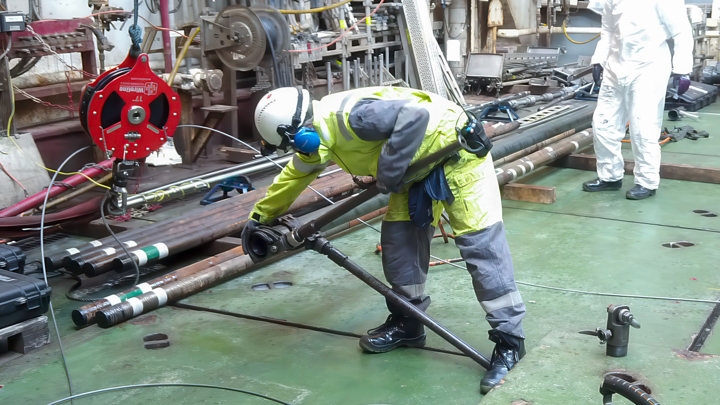
Well type
Oil producer
Max. temperature
154°F (68°C)
Max. deviation
88°
Max. depth
13,190 ft (4,023 m) MD
Time and cost saving
43 runs - removed 2 tons of sand proppant
Pressure
5,714 psi (394 bar)
Max. depth in operation
10,571 ft MD
Distance tractored
2,297 ft (700m) average each run
Location
Norway
Welltec® performed a clean out operation using the Well Cleaner® Power Suction Tool (PST) for a client facing a one-barrier well in the Norwegian sector of the North Sea.
The well was initially sidetracked in 2015 and cased with a 4.5” liner. A Coiled Tubing (CT) clean out was performed prior to drilling the sidetrack. The liner was set with open-hole sand screens in the toe and swell packers were used for zonal isolation. After completion, the operator fracked the well and started production. In 2016, proppants were produced to surface before eventually stabilizing.
The operator discovered a pressure buildup in the A annulus. An e-line operation running leak detection and a multi-finger caliper tool produced data that suggested the leak had to be below the holdup depth where the tools hit an obstruction at 9,711 ft (2,960m). Moreover, a minor leak from the annulus to the formation was discovered, leaving the well with only one barrier and resulting in an orange-risk classification.
The operator assumed that sand proppant was blocking the wellbore. The client began planning for a CT clean out operation to set a plug above the reservoir. Welltec was already onsite with its mechanical puncher tool as a contingency in case of an uncontrolled pressure buildup, wherein the Welltec Puncher® could establish communication with the A annulus.
The client had to remain onsite at the well to monitor the single barrier. CT was taking considerable time to plan and mobilize. With Welltec already onsite as a contingency, the client decided to give the PST’s bailing solution a chance to clear the obstruction in the interim.
During the first several runs, Welltec used the PST High Flow (HF), which is designed to provide maximum flow velocity output, but it collected low amounts of debris per run. Thus, the crew switched to the PST Large Drawdown (LD), which is designed to collect a wide range of debris sizes and types. The PST LD achieved better recovery rates than the PST HF, so, after run 19, the crew continued solely with the PST LD for the rest of the operation.
Welltec removed more than two tons of sand proppant over 43 runs. Additionally, the leak was located and verified at 10,459 ft (3,188m) MD, and the plug was set.
The client initially did not believe Welltec’s solution would be the best option but was willing to try an e-line alternative while waiting for CT. The results changed the client’s mind.
Whereas CT requires much time-consuming planning, Welltec’s PST requires less planning and can be mobilized quickly. Welltec removed more than two tons of sand proppant over 43 runs and enabled the client to verify the leak and set the plug.
Welltec saved the client one CT operation, resulting in both time and cost savings. The client was very happy with the progress made by the PST and cancelled the CT operation.
This operation demonstrated to the client that Welltec’s e-line cleanout solutions are robust enough to handle wells with similar issues.